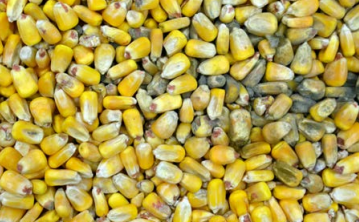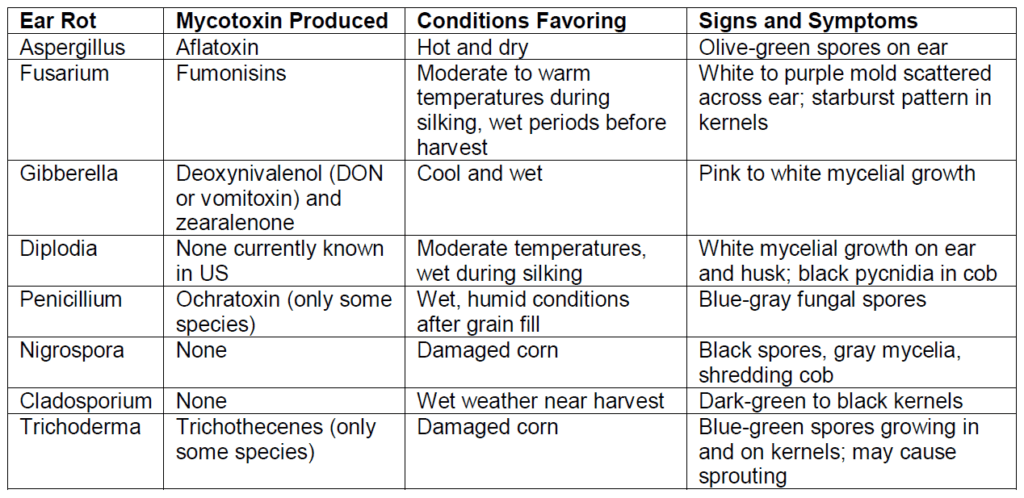 As harvest begins, it is important to continue scouting fields for diseases, including ear rots. Penicillium ear rot has been more prevalent than usual across central Iowa, according to Iowa State University agronomists. Fusarium ear rot has also been frequently reported.
As harvest begins, it is important to continue scouting fields for diseases, including ear rots. Penicillium ear rot has been more prevalent than usual across central Iowa, according to Iowa State University agronomists. Fusarium ear rot has also been frequently reported.
AgVenture Corn Product Manager Darren Bakken says that fields with increased corn earworm and western bean cutworm damage are showing higher levels of ear rots.
 With moldy ears comes the risk of mycotoxins and their negative health effects for consumers and livestock. Fusarium ear rot may produce fumonisins in affected grain and Penicillium ear rot poses a risk for ochratoxin A (OTA) production, according to Iowa State University. Talk to your AgVenture Yield Specialist about available mycotoxin resources if ear molds are present in your fields.
With moldy ears comes the risk of mycotoxins and their negative health effects for consumers and livestock. Fusarium ear rot may produce fumonisins in affected grain and Penicillium ear rot poses a risk for ochratoxin A (OTA) production, according to Iowa State University. Talk to your AgVenture Yield Specialist about available mycotoxin resources if ear molds are present in your fields.
Plan ahead for 2020 by rotating crops and selecting hybrids with ear rot resistance. Hybrids with in-plant insect protection, like those with Optimum® AcreMax® Leptra® insect protection, can reduce insect damage to help prevent diseases from entering the ear. Discuss the best hybrids for your fields with your AYS as you prepare your 2020 crop plan.
For help identifying the specific type of ear rot in your field, utilize this resource from the Crop Protection Network.
